Coastal landscapes are continuously blasted with wind and salt spray. A nice sea breeze is welcome on a hot summer afternoon, but the wind can give you goosebumps and a real chill at other times of the year. Windscreens create a livable microclimate in a coastal garden that might otherwise be too windswept. Use your coastal garden more frequently throughout the year by paying special attention to the prevailing winds and designing screens that protect your outdoor living areas from harsh wind.
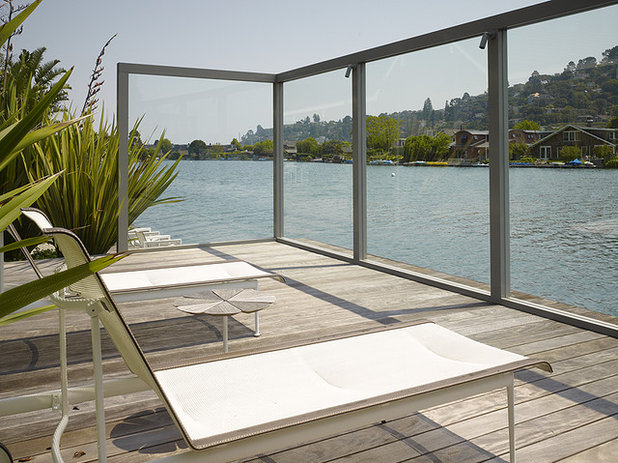
Gary Hutton Design
Choose your wind-free location. Wind accelerates over large expanses, like big bodies of water. As it encounters the change of terrain on the coast, its intensity is altered and slowed by vegetation, topography and buildings. To decrease wind exposure for your coastal garden, determine the exact areas you want to protect. Consider creating a wind-free zone where you relax the most, or screen wind from an outdoor dining or gathering area.
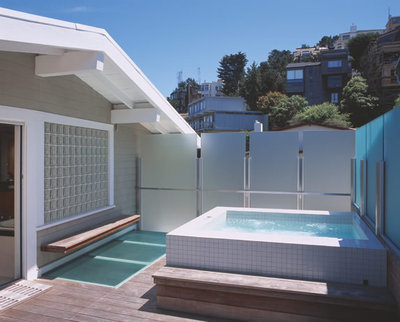
Gast Architects
Hot tubs and swimming pools are great places for creating a wind shadow. The screen may also help to give privacy. An outdoor shower is another good spot to protect from the wind. Goosebumps, be gone.
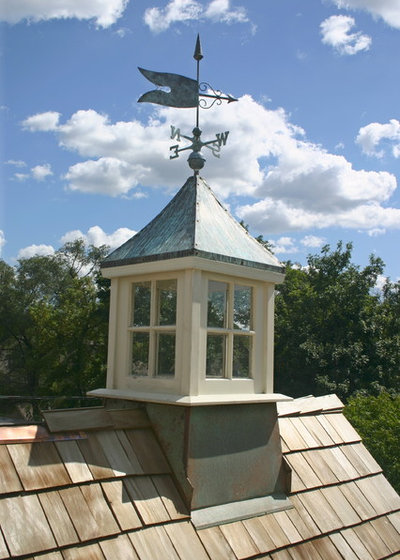
Fergon Architects, LLC
Determine the direction the wind is coming from. Perhaps you live on the coast with a fully functioning weather vane — lucky you! Use that to track the predominant wind direction for your property. The windscreen should be set perpendicular to the prevailing wind direction.
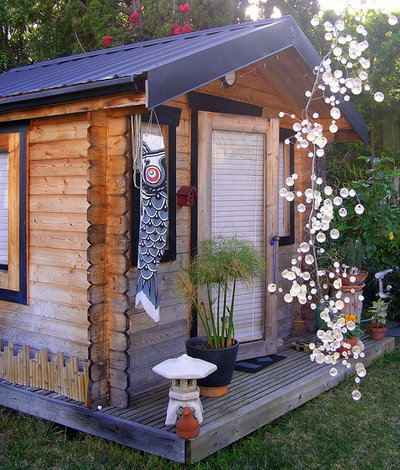
Lisa Hallett Taylor
Sans charming weather vane, a good old windsock from the drugstore will do the job. Set up your windsock near the area you are most interested in protecting, and make notes throughout the day as to which direction it’s blowing. Note that the prevailing wind direction may be different depending on the season. If you live in a coastal area with sand fences, check their angle because they are typically situated perpendicular to the direction of prevailing winds.
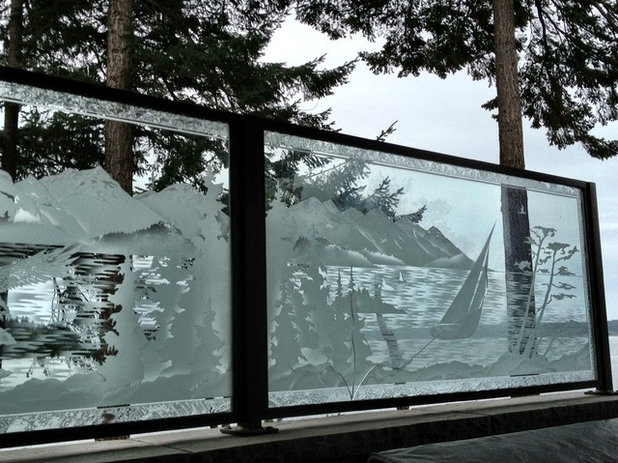
Tamara Rosenbloom Design LLC
Factor the height. A vertical screen — either a wall, trees, trellis or other method — will act as a shield that redirects the flow of wind up and over the screen. The side of the screen that faces the wind is called the windward side; the opposite is called the leeward side. The leeward side is where the wind shadow forms, simply a pocket of space that is not windy. In general, the taller the windscreen, the larger the wind shadow.
Bear in mind that permanent outdoor structures on the coast will likely fall under the purview of the building inspector. Be sure to contact your building department early in the design process and ask about height restrictions. If you are limited to a 6-foot constructed windscreen, consider adding upright plants as an additional windbreak.
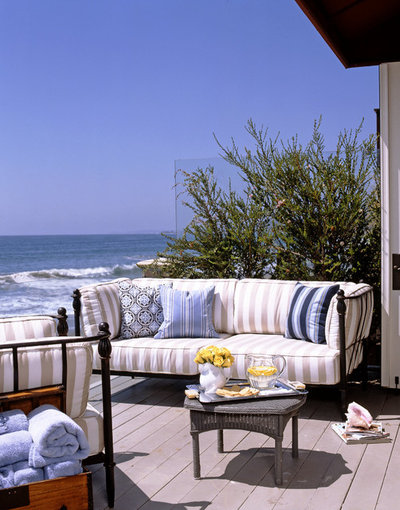
Susan Cohen Associates, Inc.
Consider a variety of materials. Screen the wind using multiple materials for the greatest effect. Here, a glass panel is combined with a salt-tolerant shrub to add privacy and texture to the vertical surface. This method also helps to enclose the deck and leave the view to the ocean mostly open. The materials you use will also be important if you want your windscreen to double as a privacy screen.
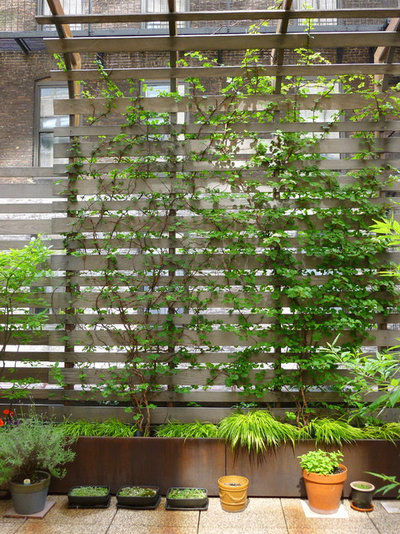
Lynn Gaffney Architect, PLLC
Vegetated windscreens will perform differently than built windscreens. The vegetation will let some wind through depending on the density of foliage. More wind can be redirected by a wall of dense evergreens, for example, than by a wide-slat trellis.
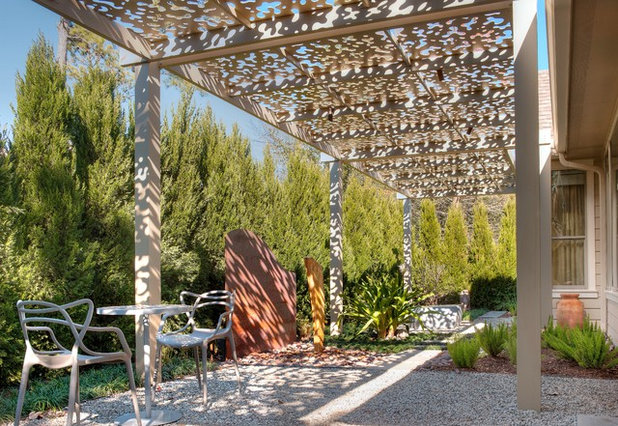
Exterior Worlds Landscaping & Design
For coastal properties, it is prudent to select vegetation that is salt-tolerant. The wind whipping onto your garden definitely carries salt with it, and that salt will accumulate on plants over time. Choose plants that are listed as having “high salt-tolerance” at the nursery. A coastal garden with salty air is a situation where native plants consistently outperform non-natives.
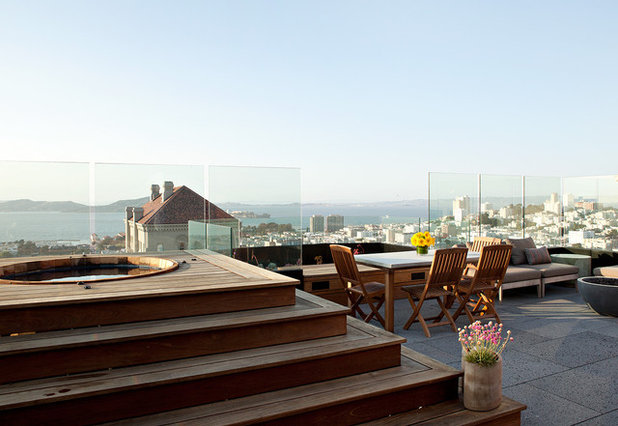
Matarozzi Pelsinger Builders
A glass windscreen is a necessity if your goal is to preserve your view to the fullest. Thick glass panels can be located to shield the wind from a seating area or gathering spot while maintaining a crystal clear panoramic vista.
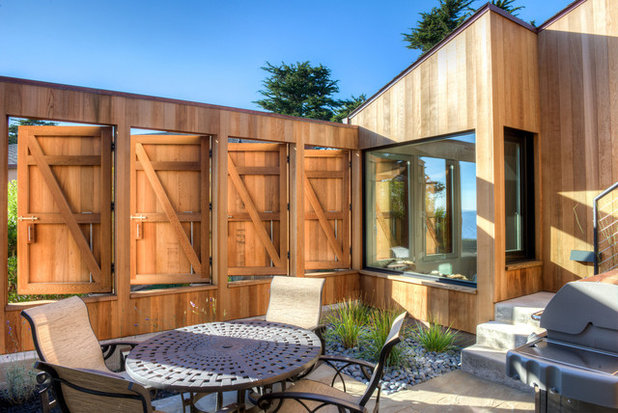
Hudson Street Design
A windscreen can be integrated into the building and coordinated with building materials, like this example. Structures in the garden can create an intimate setting and achieve the feeling of an outdoor room. The wooden windows here open up the view and can be easily closed to protect from wind or create privacy.
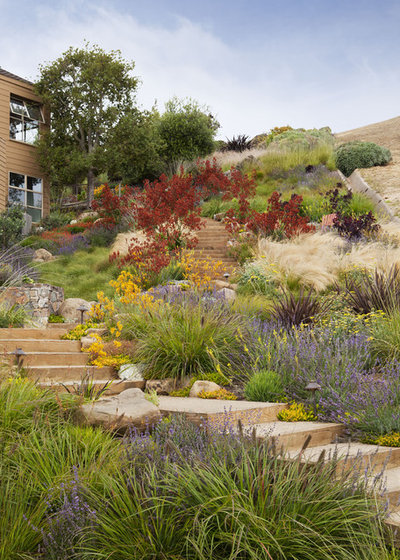
Arterra Landscape Architects
Use wind as an opportunity. A windy site provides unique opportunities for selecting plants that look beautiful in the breeze. Tall grasses with airy seed heads and flowers on long stems are an elegant way to capture the presence and mood of the wind in the garden. Just imagine little wildflowers bobbing their heads and fine-textured grasses being blown back by wind. It’s a dramatic scene.
See 8 ornamental grasses to grow in coastal gardens
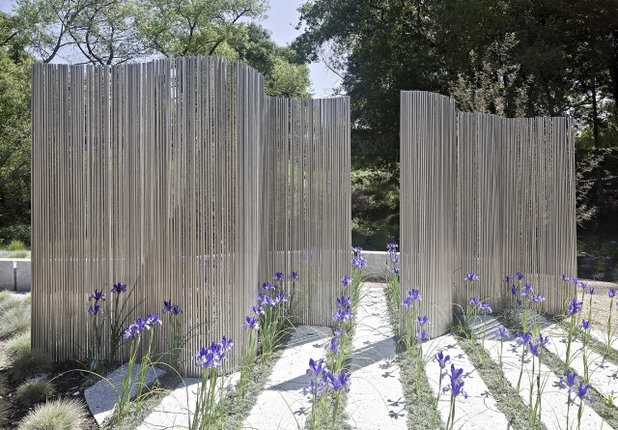
WA Design Architects
Wind is an ephemeral flow that can enliven your garden when it moves through a wind sculpture or chime. This stunning steel rod sculpture allows some wind to pass through and is an artistic garden feature.
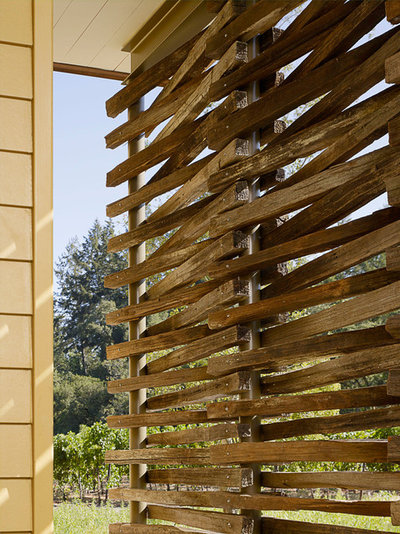
Nick Noyes Architecture
Think creatively about the possibilities for your windscreen. After you determine how much wind and light should come through, work with a sculptor, metalworker, carpenter or other skilled professional to turn your idea into reality. The screen itself can be a work of art.
More: Nodding to the Coast in a Bainbridge Island Entry Garden





